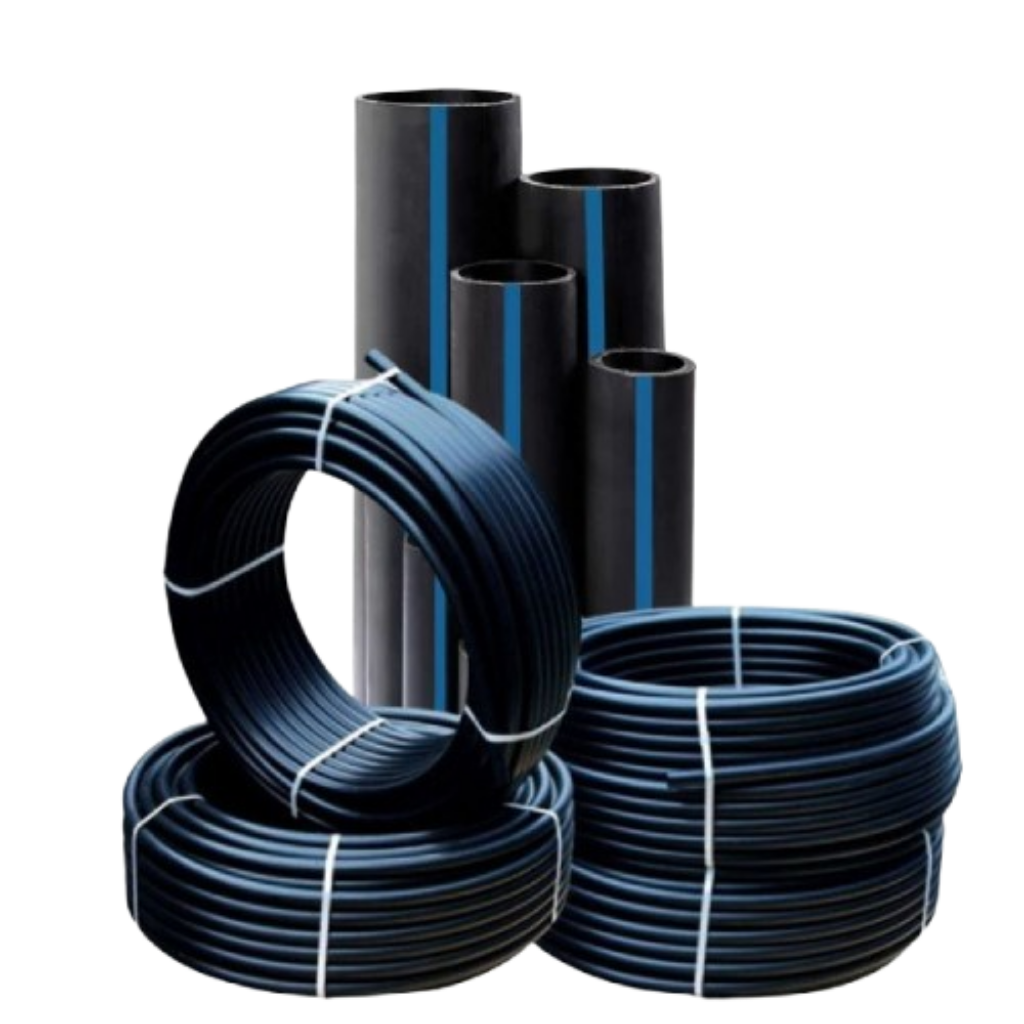63mm HDPE Pipe
The 63mm HDPE (High-Density Polyethylene) pipe is widely used in various fluid transportation systems, including water supply, irrigation, and drainage. The pressure ratings you’ve listed (4 kg/cm², 6 kg/cm², 10 kg/cm², 12.5 kg/cm², 16 kg/cm², 20 kg/cm², 25 kg/cm²) specify the maximum internal pressure the pipe can safely handle under normal conditions. Here’s more detail on each pressure rating and its typical applications:
Pressure Rating Explanation:
4 kg/cm²
- Pressure Level: Low
- Applications: Suitable for low-pressure water distribution systems, such as small-scale irrigation systems, or residential water supply in low-pressure areas.
- Pipe Thickness: Thinner walls compared to higher pressure pipes.
6 kg/cm²
- Pressure Level: Moderate-low
- Applications: Ideal for residential and commercial water supply systems with moderate pressure needs. Can be used for irrigation systems and garden piping in low- to medium-usage areas.
10 kg/cm²
- Pressure Level: Standard
- Applications: Commonly used for general water distribution, such as residential and light commercial systems. Suitable for domestic pipelines and agriculture irrigation projects.
Key Considerations:
Material: HDPE is known for being durable, resistant to corrosion, and capable of handling both pressure and temperature fluctuations, making it a good choice for many types of fluid transport.
Thickness: The wall thickness increases as the pressure rating increases. Higher-pressure pipes require thicker walls to prevent them from bursting under higher internal pressures.
Applications: The pressure class you choose will depend on the type of fluid you are transporting (e.g., water, chemicals), the size of
If you are selecting a pipe for a specific project, you’ll want to ensure the pressure rating aligns with the expected operating pressure of the system. Would you like any further details on how to choose the right pressure class, or how to size your pipe based on flow requirements? the system, and the required flow rates.
Standards and Certifications
HDPE pipes typically comply with standards such as:
ISO 4427: This standard covers the specification for polyethylene pipes used for water supply.
ASTM D3035: This standard is common in the U.S. for the specification of polyethylene piping.
PN (Pressure Nominal) Ratings: This defines the pressure capacity of the pipe, with higher PN ratings representing pipes that can handle higher pressures.

